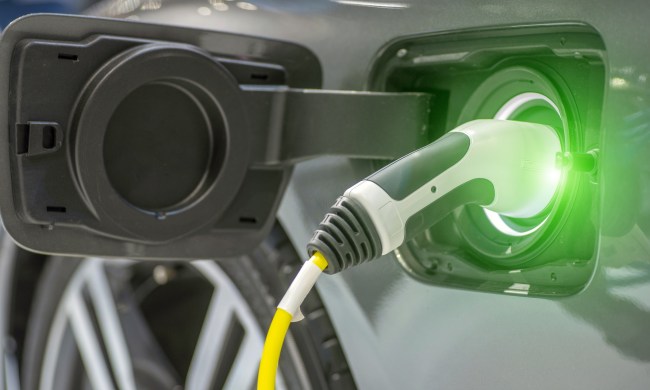
If self-driving cars become mainstream, it’s likely that many of them will be electric. But if no one is driving, will anyone be around to plug them in? Electrify America — the entity created to spend Volkswagen diesel emissions fines on zero-emission vehicle infrastructure — is teaming up with charging company Stable Auto to solve that problem. The solution? Robotic charging stations.
Electrify America and Stable plan to open a pilot charging site in San Francisco in early 2020. In addition to being Stable’s hometown, the City by the Bay hosts fleets of test vehicles from Waymo and General Motors’ Cruise division. Waymo uses Chrysler Pacifica Hybrid plug-in hybrid minivans, and recently added the all-electric Jaguar I-Pace to its fleet. Cruise uses modified Chevrolet Bolt EV electric cars. That should provide a ready source of customers, although neither Waymo nor Cruise has commented on the announcement.
The pilot site will be able to charge electric cars without human intervention, according to an Electrify America press release. Photos provided by Electrify America show robotic arms that will presumably be used to plug charging cables into cars. The charging stations themselves will be 150-kilowatt DC fast-charging stations — among the fastest currently available. A handful of these stations are already operable in California, but only certain cars are equipped to charge at 150 kW.

The charging stations for the pilot site will be provided by Electrify America, while Stable will provide the robotic arms and manage the overall project. Electrify America will evaluate the technology with an eye toward future use at other sites.
Autonomous-charging demonstrations were previously discussed as part of Electrify America’s second round of investments, known as Cycle 2. Electrify America is committed to spending $2 billion on zero-emission vehicle infrastructure over 10 years, as part of Volkswagen’s diesel-emissions cheating settlement. While it is a wholly-owned subsidiary of VW, Electrify America’s charging stations are open to electric cars from other automakers.
Aside from a bizarre attempt by Tesla, relatively little effort has been made to automate charging. But it could be an important component in the rise of self-driving cars. Electric cars’ large battery packs provide the power necessary to run the sensors and computers that make autonomous driving possible, and electric powertrains mesh more easily with automation. The first autonomous cars are likely to be used in ridesharing and delivery services, taking over for human drivers. Most electric car charging stations are unattended, so companies will have to find a way to charge cars when there is no human driver onboard. That could also benefit anyone who doesn’t want to give up driving. Imagine pulling up to a station and getting a charge automatically.


